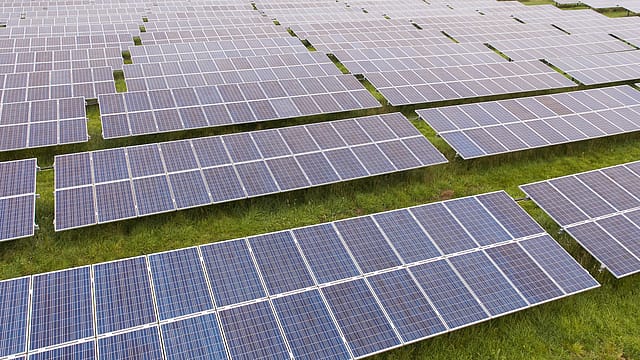IAEA alarm over world’s dependence on China for 80% of solar PV
ADVERTISEMENT

China’s global share in all the key manufacturing stages of solar panels exceeds 80% today and for key elements including polysilicon and wafers, this is set to rise to more than 95% in the coming years based on current manufacturing capacity under construction, says the International Energy Agency (IEA).
In its first-ever report on the solar sector, the IEA says annual additions of solar PV capacity to electricity systems around the world need to more than quadruple to 630 gigawatts (GW) by 2030 to meet net zero emission goals by 2050. Global production capacity for the key building blocks of solar panels – polysilicon, ingots, wafers, cells, and modules – would need to more than double by 2030 from today’s levels.
Global solar PV manufacturing capacity has increasingly moved from Europe, Japan, and the United States to China over the last decade. China has invested over $50 billion in new PV supply capacity – ten times more than Europe − and created more than 3,00,000 manufacturing jobs across the solar PV value chain since 2011. The capacity of Chinese companies is more than double that of local PV demand and the country is home to the world’s 10 top suppliers of solar PV manufacturing equipment.
China accounts for 37.4% of modules, 42.5% of cells, 48.4% of wafers and 39.7% of polysilicon manufacturing capacity. In 2021, the value of China’s solar PV exports was over $30 billion, almost 7% of China’s trade surplus over the last five years. In addition, Chinese investments in Malaysia and Vietnam also made these countries major exporters of PV products, accounting for around 10% and 5% respectively of their trade surpluses since 2017. The total value of global PV-related trade – including polysilicon, wafers, cells and modules – exceeded $40 billion in 2021, an increase of over 70% from 2020, says the IEA study.
December 2025
The annual Fortune 500 India list, the definitive compendium of corporate performance, is out. This year, the cumulative revenue of the Fortune 500 India companies has breached $2 trillion for the first time. Plus, find out which are the Best B-schools in India.
The energy agency suggests diversification can reduce supply chain vulnerabilities and offer economic and environmental opportunities. New solar PV manufacturing facilities along the supply chain could attract $120 billion investment by 2030. The solar PV industry could create 1,300 manufacturing jobs for each gigawatt of production capacity. The solar PV sector has the potential to double its number of direct manufacturing jobs to one million by 2030. Critical sectors such as polysilicon, ingots, and wafers would attract the majority of investment to support growing demand.
It estimates costs in China are 10% lower than in India, 20% lower than in the United States, and 35% lower than in Europe. Large variations in energy, labour, investment, and overhead costs account for these cost differences. Electricity accounts for over 40% of production costs for polysilicon and nearly 20% for ingots and wafers. Around 80% of the electricity involved in polysilicon production today is consumed in Chinese provinces at an average electricity price of around $75 per megawatt-hour (MWh). This is almost 30% below the global industrial price average, says IEA.
